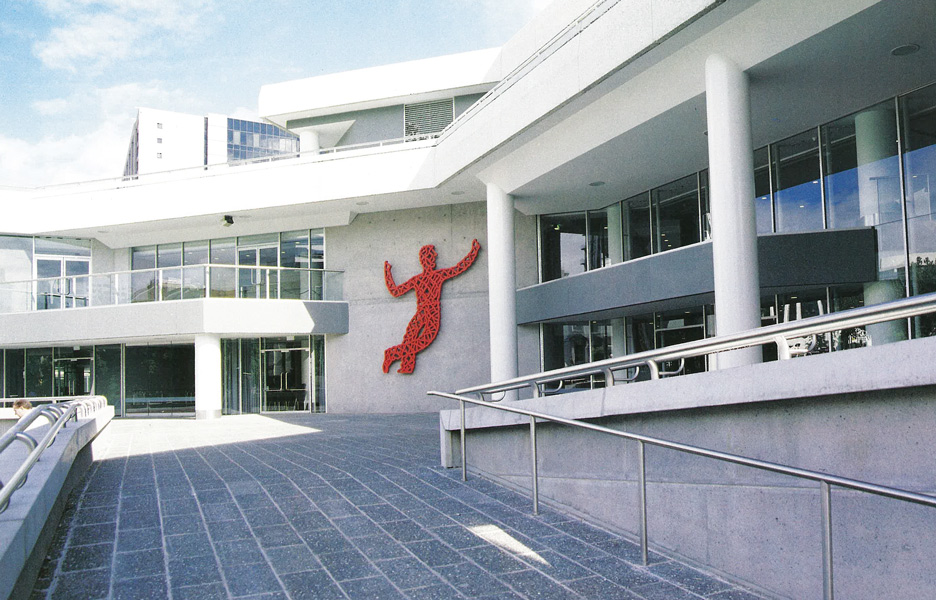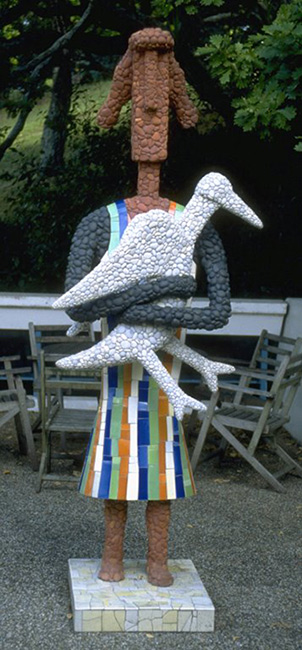It is with sadness that staff at Auckland Art Gallery Toi o Tāmaki learnt of the death of Barry Lett. Barry was a renowned New Zealand artist, pioneering art dealer, committed environmentalist and friend of many. To his partner, to his family and to all his friends we send our heartfelt condolences.
Barry was an influential figure in the New Zealand art scene for more than five decades. In 1963, he presented his first exhibition at Harry Seresin’s Wellington coffee bar; this was during his final year’s study with painter Paul Olds. Soon after, he journeyed to Auckland and attended Elam School of Art for a short period. He quickly recognised that Auckland would benefit from an innovative contemporary gallery which could profile recent work by local painters, sculptors and printmakers and offer it for purchase.
Accordingly, in April 1964 Barry undertook with John Perry an influential initiative by taking over the Uptown Gallery at 478 Queen Street, opposite Myers Park. Uptown Gallery became financially viable and was much visited.
The first exhibition which Barry organised at Uptown was Paintings by Jeff Macklin and Ross Ritchie, both of whom had been fellow students from Wellington. At the opening on 11 May, a group of Aucklanders led by Hamish Keith purchased Ross Ritchie’s Thought II and presented it to Auckland Art Gallery. This was almost certainly the first gift of a contemporary painting by a young group of art supporters to a public art museum in New Zealand. Many people went to the Uptown and checked out its exhibitions and public events, which included folk music concerts that further helped underwrite the gallery’s activities. Peter McLeavey memorably visited Uptown some years prior to opening his Cuba Street premises.
With the success of Uptown Gallery, Barry began his work as an art dealer in earnest by partnering with Rodney Kirk-Smith and Frank Lowe in 1965. For the next decade the Barry Lett Galleries proactively supported New Zealand’s rapidly expanding art scene by inviting artists to show in his upstairs gallery in Victoria Street.
Both established and emerging artists soon became part of the Barry Lett Galleries stable. While Barry showed senior figures such as Milan Mrkusich, Colin McCahon, Pat Hanly, Greer Twiss, Vivian Lynn, Paratene Matchitt and Robert Ellis, younger practioners like Richard Killeen and Tony Fomison also presented their new paintings. As well, post-object artists such as Jim Allen and Leon Narbey exhibited installations. Barry’s promotion of the self-taught painter Teuane Tibbo led to both national and international acquisitions of her paintings.
Barry’s opening events were always lively and spirited; people still recall them with affection. He was a welcoming art dealer and his warmth and enthusiasm was encouraging. His gallery helped revolutionise the presentation of contemporary art in Auckland, and his thematic exhibitions of artists such as Colin McCahon and Pat Hanly actively affirmed their choice to present series of paintings.
In 1968, he issued a set of 12 prints that became known as the Barry Lett Galleries Multiples, which could be acquired for $35 with one multi-use frame included. These prints are now some of the most widely distributed prints of the period.
The Barry Lett Galleries were never solely a venue for art exhibitions. It hosted memorable events. One of the liveliest evenings was the BOMB reading on 20 August 1969 when David Mitchell, Mark Young, and James K Baxter performed their recent poems focused on protest and the social awareness of politics.
When Auckland’s Aotea Centre opened in 1990, Barry Lett’s four metre high wooden sculpture Red Dancer was installed on the main exterior wall adjacent to the Centre’s entrance. Of this major public commission Barry wrote ‘I wanted to suggest that the figure was about to dance, by the fact that it was poised off balance.’


